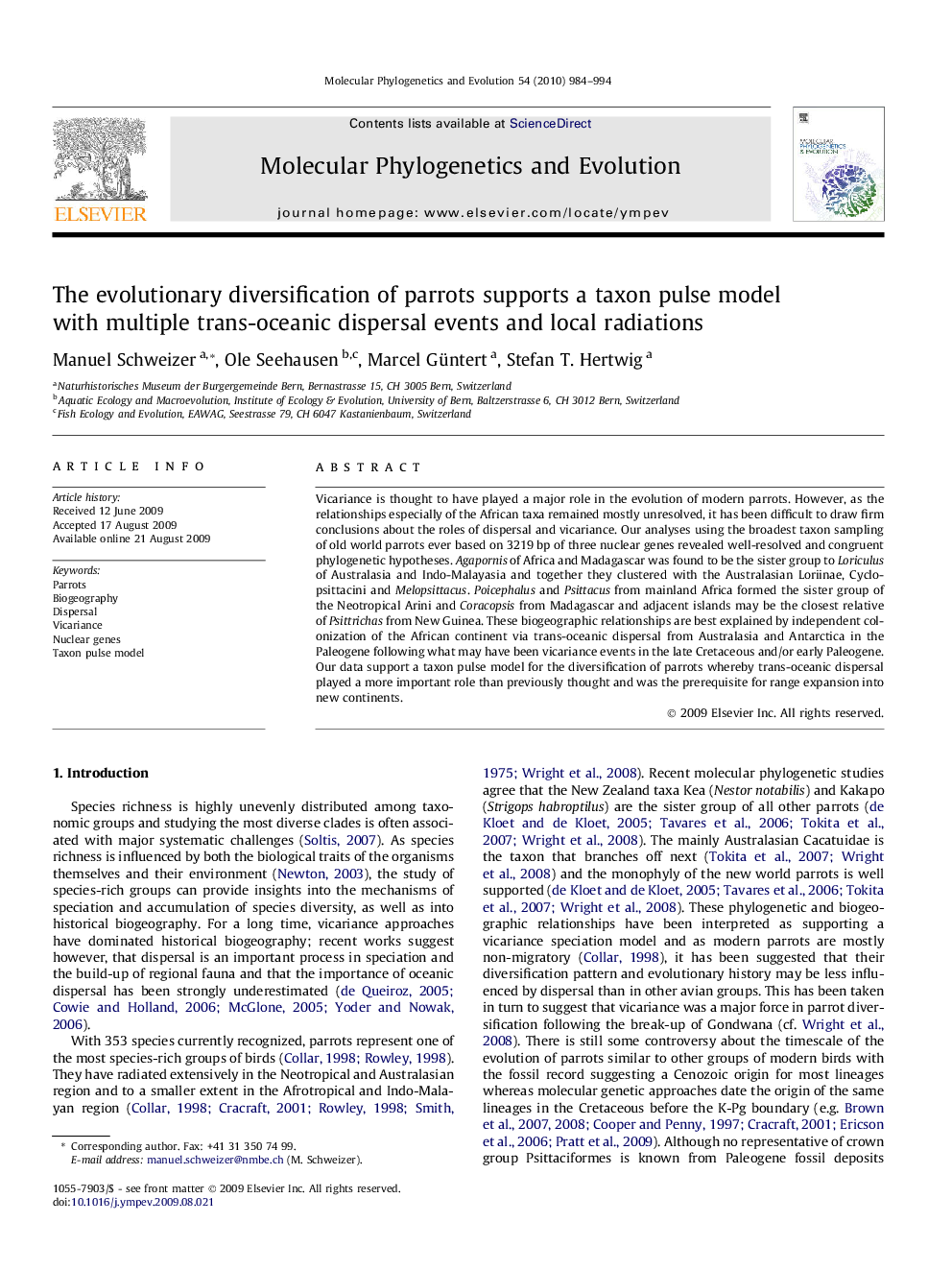| کد مقاله | کد نشریه | سال انتشار | مقاله انگلیسی | نسخه تمام متن |
|---|---|---|---|---|
| 2834885 | 1164325 | 2010 | 11 صفحه PDF | دانلود رایگان |

Vicariance is thought to have played a major role in the evolution of modern parrots. However, as the relationships especially of the African taxa remained mostly unresolved, it has been difficult to draw firm conclusions about the roles of dispersal and vicariance. Our analyses using the broadest taxon sampling of old world parrots ever based on 3219 bp of three nuclear genes revealed well-resolved and congruent phylogenetic hypotheses. Agapornis of Africa and Madagascar was found to be the sister group to Loriculus of Australasia and Indo-Malayasia and together they clustered with the Australasian Loriinae, Cyclopsittacini and Melopsittacus. Poicephalus and Psittacus from mainland Africa formed the sister group of the Neotropical Arini and Coracopsis from Madagascar and adjacent islands may be the closest relative of Psittrichas from New Guinea. These biogeographic relationships are best explained by independent colonization of the African continent via trans-oceanic dispersal from Australasia and Antarctica in the Paleogene following what may have been vicariance events in the late Cretaceous and/or early Paleogene. Our data support a taxon pulse model for the diversification of parrots whereby trans-oceanic dispersal played a more important role than previously thought and was the prerequisite for range expansion into new continents.
Journal: Molecular Phylogenetics and Evolution - Volume 54, Issue 3, March 2010, Pages 984–994